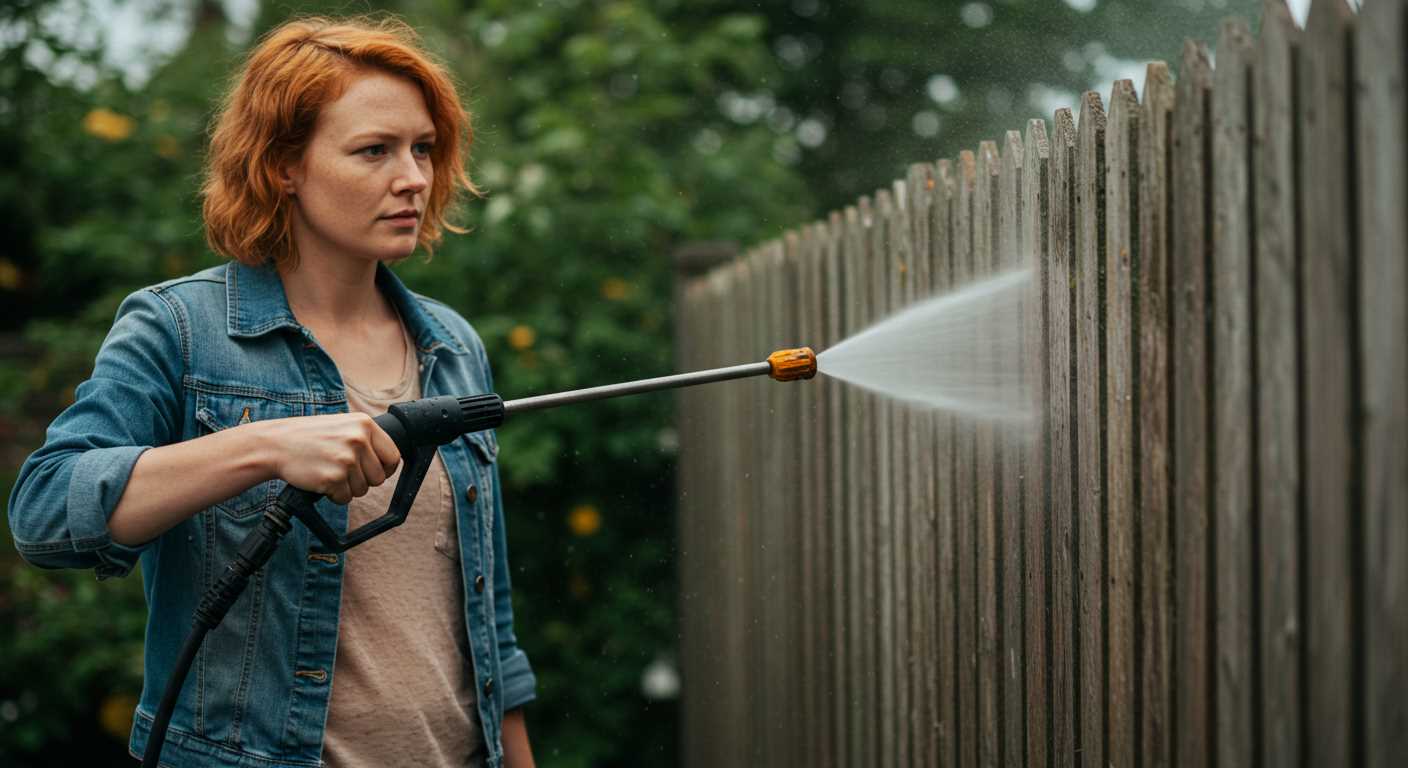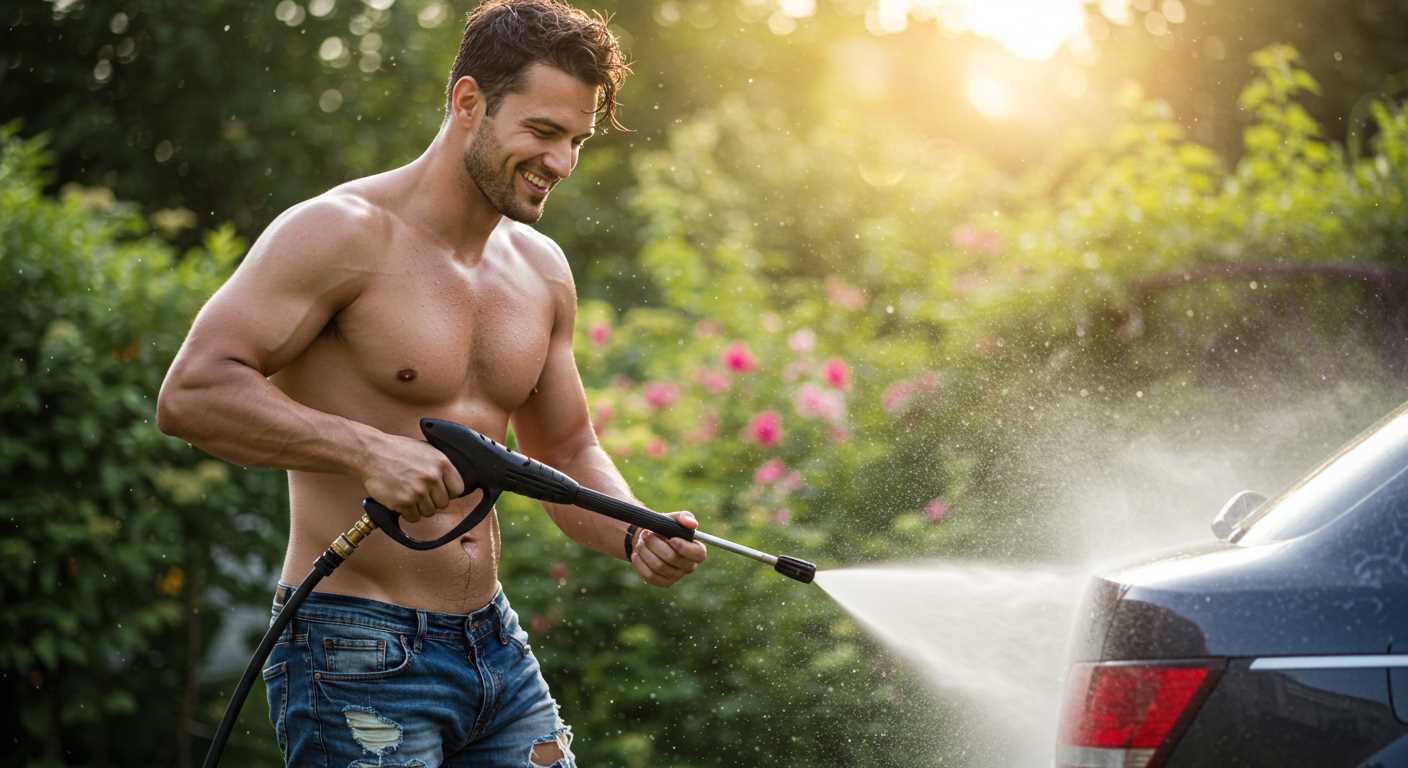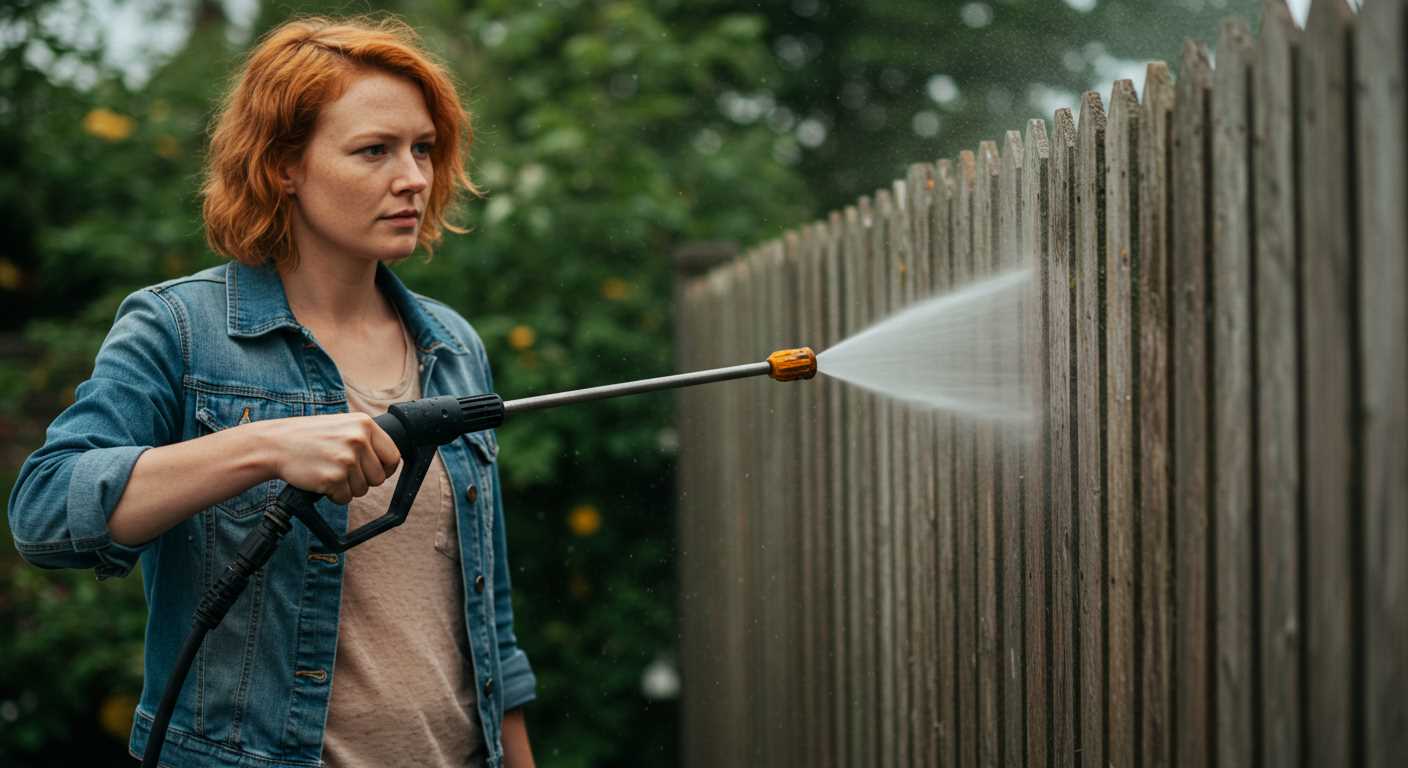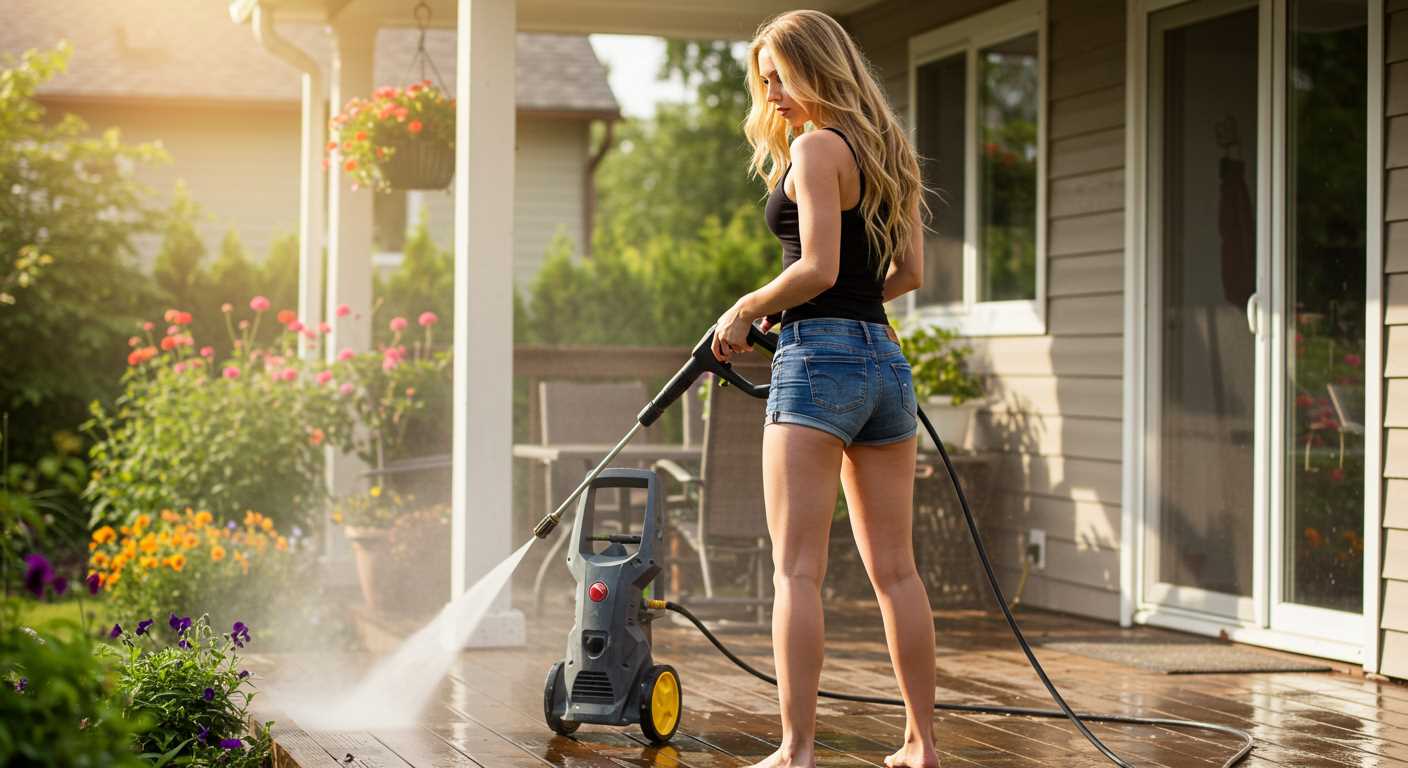




Begin with selecting a suitable water source. A standard garden tap usually works perfectly. Ensure the hose is securely attached to the tap and that it’s in good condition, free from leaks or kinks. A reliable connection prevents water loss and maintains optimal flow.
Next, connect the other end of the hose to the inlet on the cleaning device. Ensure the fitting clicks into place, indicating a firm connection. A loose attachment can lead to loss of pressure and inefficient operation. Check this connection thoroughly before proceeding.
After establishing the water supply, it’s time to attach the high-pressure hose. This is typically a simple twist-and-lock mechanism. Make sure it’s tightly secured, as any air leaks can impact the performance. Once connected, unwind the hose to prevent any tangles during use.
Finally, plug in the unit to a power source, ensuring the voltage matches the specifications provided by the manufacturer. Always conduct a quick safety check of the electrical cord for any damage. With everything in place, switch on the machine and let the cleaning begin!
Choosing the Right Location for Your Pressure Washer
For optimal performance, select a flat, stable surface with good drainage. Avoid placing the unit on soft ground or uneven surfaces, which can lead to instability during operation. I once set up my machine on a grass patch, and it shifted mid-cleaning, causing a mess and prolonging the task.
Access to Water and Power
Ensure proximity to a water source; a garden hose should reach without strain. I learned the hard way that long hoses can reduce water pressure significantly. Keep in mind the need for electricity; a grounded outlet within reach is a must to avoid using extension cords, which can be hazardous.
Consider Surroundings
Position away from windows and delicate plants. When I first started, I sprayed a neighbour’s window by accident, leading to an unexpected clean-up. Additionally, keep the area clear of obstacles to allow easy manoeuvrability. A cluttered space can lead to accidents or damage to the equipment.
Connecting the Water Supply to Your Pressure Washer
Start with a reliable water source, preferably a garden tap. A consistent supply is key for optimal operation.
- Ensure the tap is easily accessible and can provide a minimum of 5 litres per minute.
- Use a high-quality hose to connect the water source to the unit. A standard garden hose works well, but ensure it’s at least 3/4 inch in diameter for sufficient flow.
Before attaching, inspect the hose for any signs of wear or leaks. A damaged hose can lead to pressure loss, affecting performance.
- Attach one end of the hose to the tap, ensuring a tight fit to prevent leaks.
- Then, connect the other end to the water inlet of the machine. Look for a quick-connect fitting if your model has one; it simplifies the process.
After securing the connections, turn on the tap to check for leaks. If water drips from the joints, tighten them until the flow is steady.
Once everything is secure, let the water flow for a few minutes before starting the machine. This step ensures the pump is primed properly and ready for use.
Remember, using a filter or a screen at the water source can help prevent debris from entering the system, which can damage internal components over time.
Setting Up the Electrical Supply for Your Pressure Washer
Ensure a reliable power source before operating any cleaning equipment. A dedicated circuit is advisable, ideally rated for 15-20 amps. This prevents tripping and ensures sufficient power for optimal performance.
Electrical Requirements
Check the specifications of the unit for voltage requirements. Most electric models operate at 120V, common in households. For those using more powerful variants, ensure compatibility with 240V circuits, often found in commercial settings.
| Voltage | Amperage | Recommended Circuit |
|---|---|---|
| 120V | 15-20A | 15A or 20A Circuit |
| 240V | 20-30A | 20A or 30A Circuit |
Extension Cords and Safety
If an extension cord is necessary, select only heavy-duty, outdoor-rated cords. Length should be minimal; longer cords can cause voltage drops, hindering performance. Always inspect for damage before use to prevent hazards.
Ground-fault circuit interrupters (GFCIs) are essential for outdoor use, providing an added layer of safety. These devices cut off power in case of a ground fault, protecting against electric shock.
Once power and safety measures are in place, the equipment is ready for operation. For those interested in specific models suited for detailed tasks, consider checking out an electric pressure washer for mobile detailing. It’s a reliable choice for achieving sparkling results without hassle.
Attaching the High-Pressure Hose Correctly
Align the high-pressure hose with the outlet on the machine. Most models feature a quick-connect fitting, making this step straightforward. Insert the hose connector into the outlet and push until it clicks securely in place. A firm connection prevents leaks and ensures optimal performance.
Always inspect the hose for any signs of wear or damage before attachment. A frayed or cracked hose can lead to serious issues during operation. If any defects are found, replace the hose immediately to avoid accidents.
After securing the connection, check the other end where the nozzle attaches. Ensure that it is also fastened correctly. If the nozzle is loose, it can detach during use, posing a safety risk.
Once both ends are connected, run a quick test by turning on the water supply. Look for leaks at both connections; any sign of water escaping means a recheck is required. Tightening the fittings usually resolves minor leaks.
When finished, ensure the hose is coiled neatly and stored away from heat sources. This practice prolongs the life of the hose and maintains its flexibility for future use.
Fitting the Nozzle to Your Pressure Washer
Choose the right nozzle for your task before attaching it. Each nozzle produces varying spray patterns and pressure levels, affecting cleaning results. For instance, a 0-degree nozzle delivers a concentrated jet, perfect for stubborn stains, while a 40-degree nozzle disperses water widely, ideal for rinsing surfaces.
Once you’ve selected the appropriate attachment, ensure the machine is turned off and disconnected from the water source. Align the nozzle with the lance and push it in firmly until it clicks or locks into place. This guarantees a secure connection, preventing accidental detachment during operation.
In my experience, I’ve seen many users overlook this step, which can lead to frustrating interruptions. During one particular job, a loose nozzle caused a significant delay as I had to stop and reattach it while water sprayed everywhere! Always double-check that the nozzle is fitted correctly.
After securing the nozzle, examine it for any signs of wear or damage. A cracked or worn nozzle can diminish performance or cause uneven spray patterns. Replacing a faulty attachment is a simple yet impactful way to maintain optimal functionality.
Finally, remember to adjust the nozzle according to the surface you’re working on. Some materials require gentler treatment, while others withstand intense pressure. Having the right settings makes the process smoother and more efficient. I’ve had plenty of moments where the right adjustment saved me time and effort.
Priming the Pressure Washer Before Use
Before commencing any cleaning task, ensure the unit is properly primed. Start by filling the detergent tank with the appropriate cleaning solution, if applicable. This step maximises cleaning efficiency during operation. Avoid using regular soaps or household cleaners, as they can damage the equipment.
Next, check the water supply. Ensure there’s no air trapped in the inlet line. Open the water source and let it run for a few moments until a steady flow is observed. This practice prevents air from entering the pump, which can lead to cavitation and potential damage.
Attach the garden hose securely to the inlet. Turn on the water supply fully and observe for leaks. If any leaks occur, tighten the connection until secure. An inadequate connection can lead to reduced performance.
Once the hose is connected, engage the trigger on the lance while the unit remains off. This action releases any trapped air in the system. Hold the trigger until a steady stream of water flows from the nozzle, indicating that the system is free from air. Then, turn the machine on.
Always refer to the manufacturer’s manual for specific priming instructions, as different models may have unique requirements. Regular checks and maintenance help ensure longevity and optimal performance. Over my years of experience, I’ve seen how crucial these initial steps are to avoid frustrating setbacks during operation.
Testing for Leaks After Setup
Inspect connections and hoses for any signs of leakage as a critical step. Run the unit for a few minutes while closely monitoring all joints and fittings. Pay special attention to the area where the water supply meets the appliance and the high-pressure hose. If any moisture appears, it’s vital to tighten the connections or replace worn seals.
Visual and Manual Checks
Look for water pooling on the ground under the machine. This is a clear indication that something isn’t sealed properly. A simple manual check involves feeling around the connections for any dampness. If any leaks are detected, make adjustments immediately. Ignoring this could lead to further damage or reduced performance, wasting both time and resources.
Testing Under Pressure
Once everything appears secure, activate the device and allow it to build pressure. Observe for any leaks during this time. If water sprays from any fittings, turn off the unit and reassess the assembly. Ensure that all components fit snugly and that no debris is interfering with the seals. Remember, a well-maintained system not only operates efficiently but also maximises longevity.
For additional information, check out this resource on whether can dogs sense an electric fence, which highlights the importance of ensuring safety in all setups.
Safety Checks Before Operating Your Pressure Cleaning Equipment
Before starting any cleaning task with this equipment, conduct a thorough inspection. Here’s a checklist based on my years of experience in the field:
Equipment Inspection

- Examine all hoses for signs of wear or damage. Cracks can lead to leaks, which can be hazardous.
- Check the nozzle for clogs. A blocked nozzle can increase pressure unexpectedly and cause injury.
- Inspect the electrical cord for frays or damages. Ensure it’s free from any cuts that could lead to an electric shock.
Personal Safety Gear
- Wear safety goggles to protect your eyes from debris and high-pressure water.
- Use gloves that are resistant to chemicals if any cleaning agents are involved.
- Wear non-slip footwear to maintain stability on wet surfaces.
Always ensure that pets and children are at a safe distance from the work area. It’s crucial to establish a safe perimeter before starting your task. In my experience, distractions can lead to accidents, so keep the area clear.
Finally, read the manufacturer’s manual thoroughly. Each model has specific safety guidelines that are important to follow. From my time in the industry, I can’t stress enough how many issues arise from overlooking these details.






.jpg)


